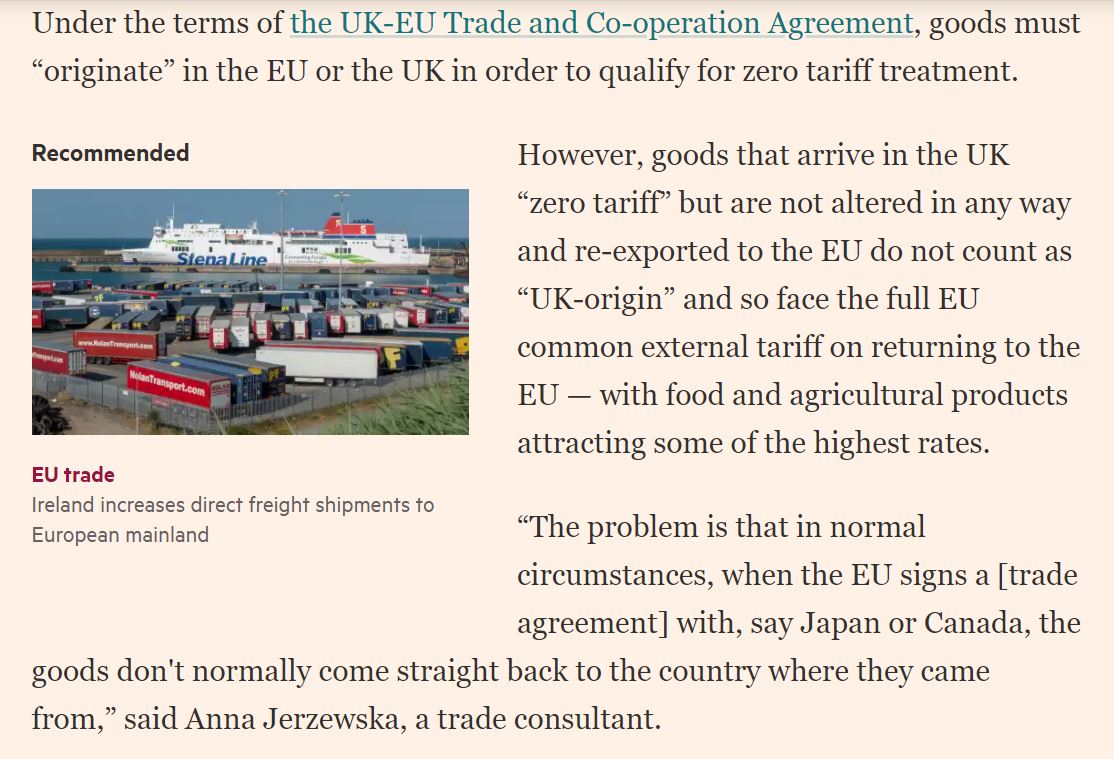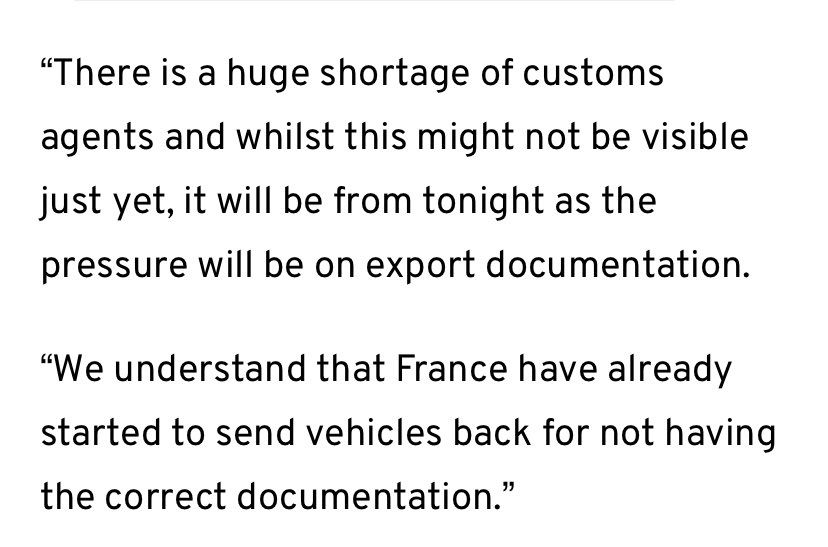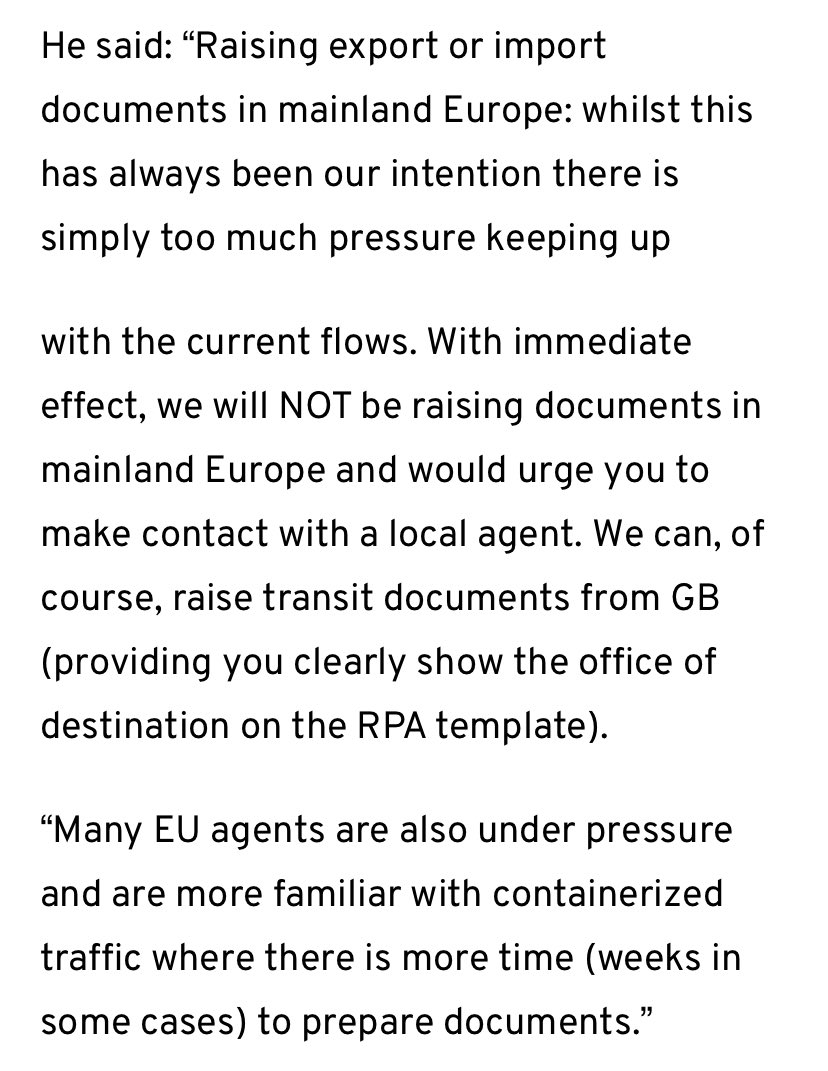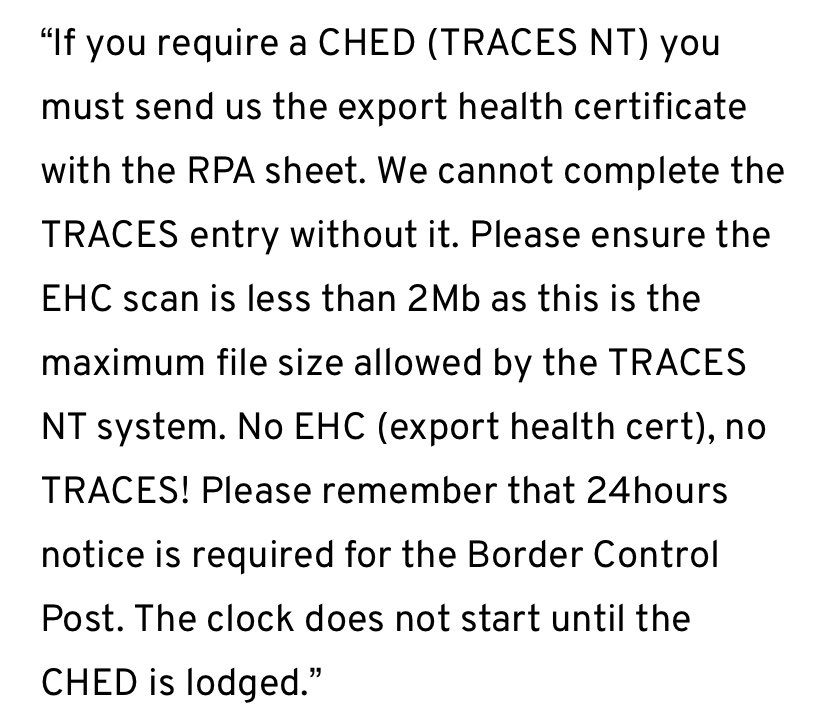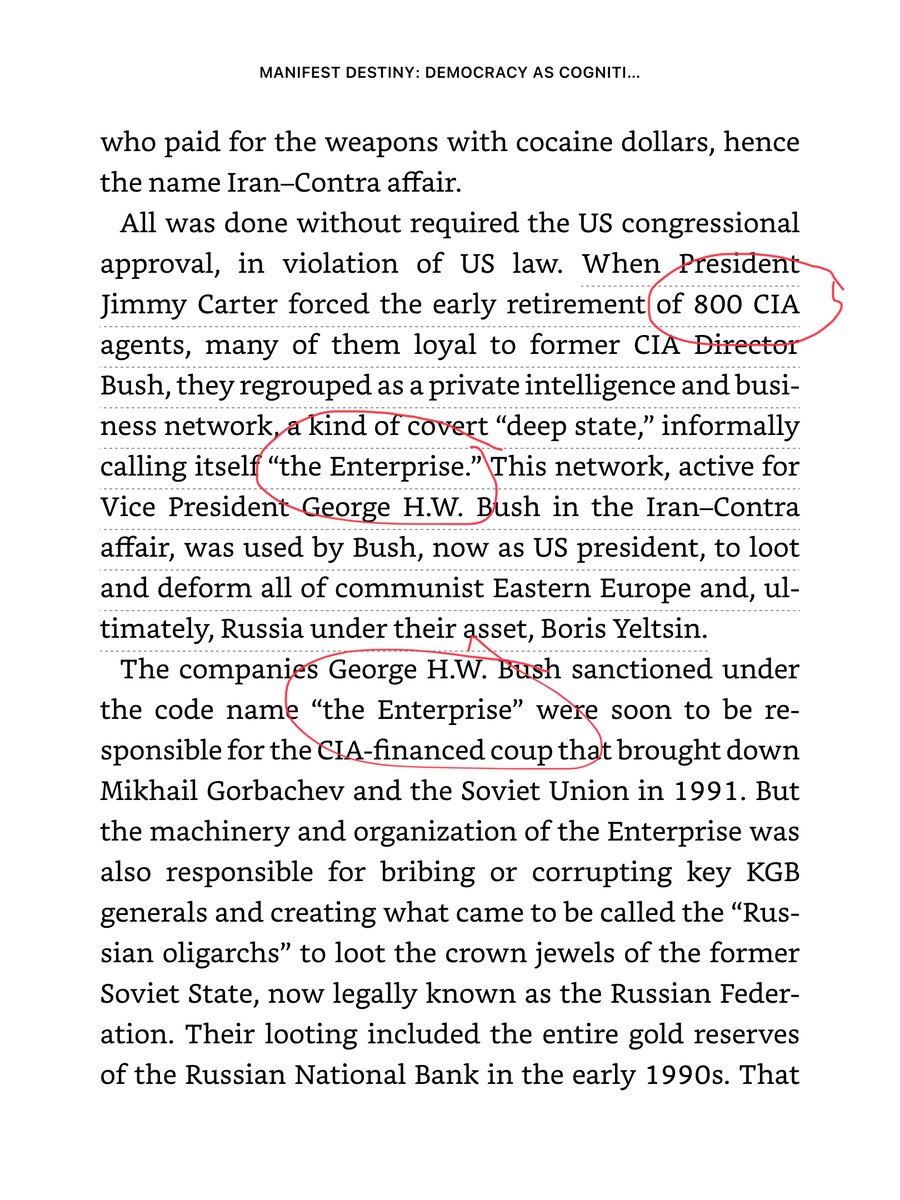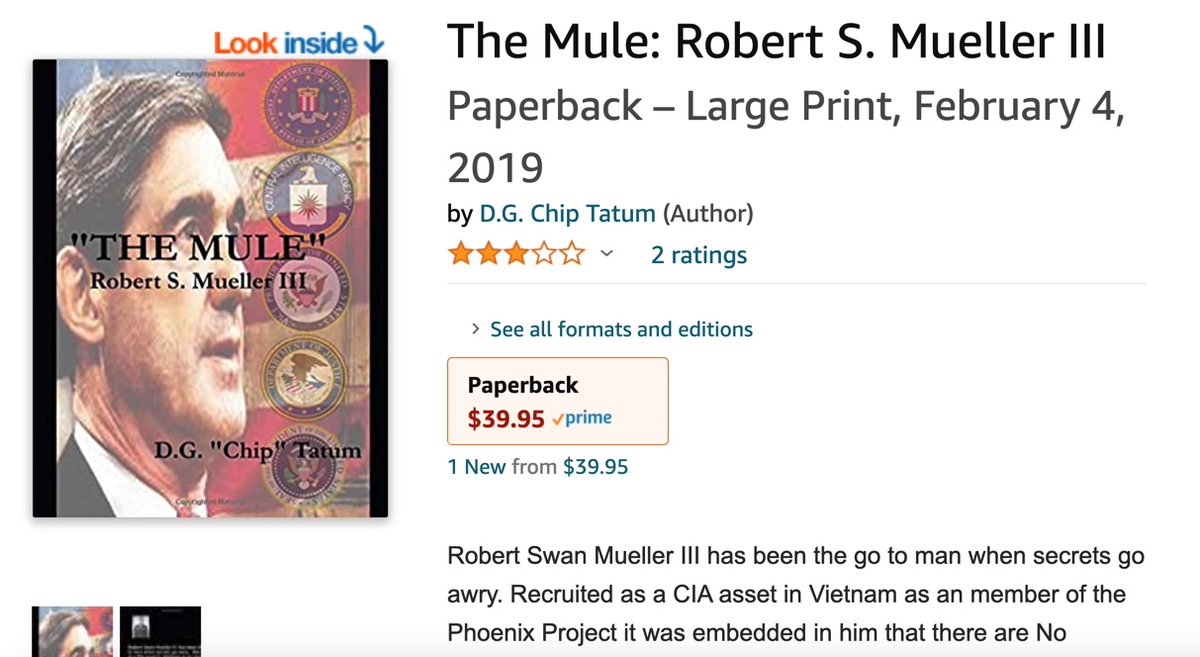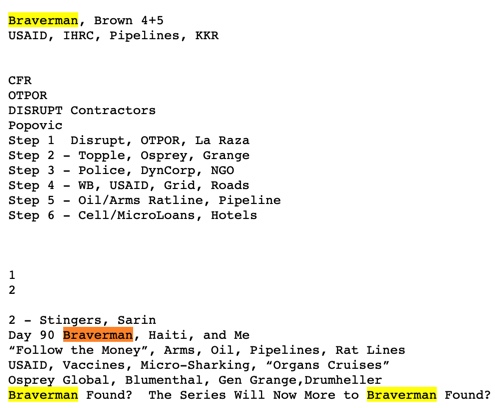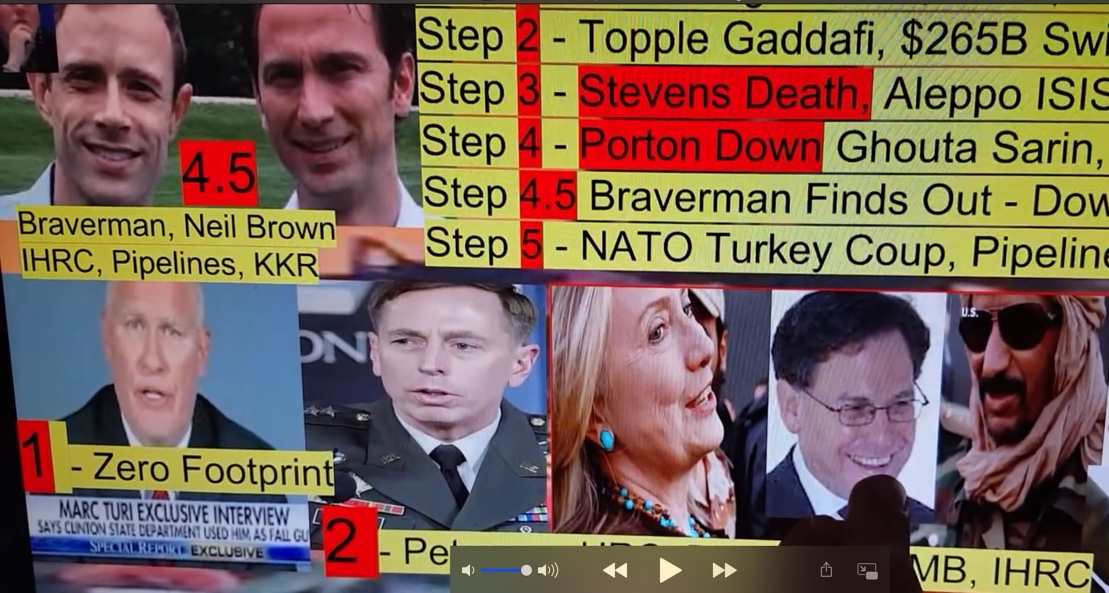
NEW. 🚨🚨🚛🇬🇧🙄🚛🚚🚨🚨 clear signs govt is preparing for coming #brexit turbulence - consulting on new fast-track scheme for food lorries returning to Europe /1

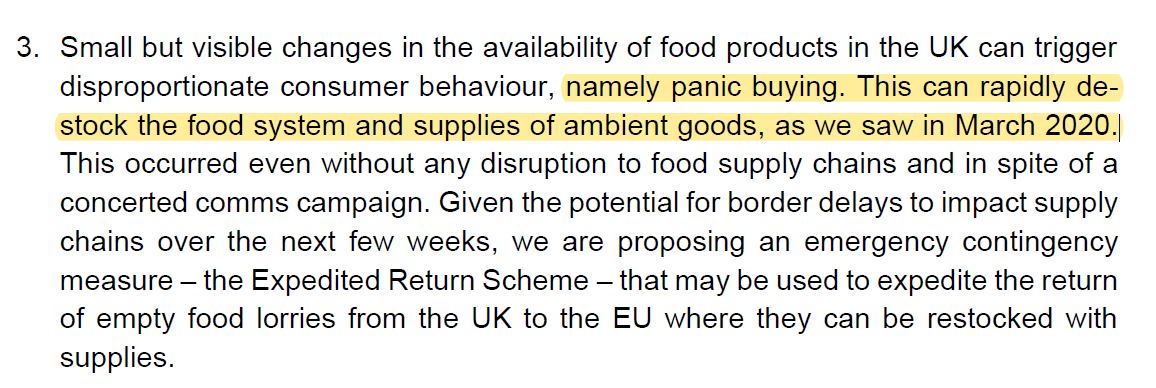

So up to 300/day could get a priority permit if scheme is agreed/7
Lorries will need to show they're coming back within 7 days also /8
says much will depend on how it was applied in practice. “Anything that allows food supplies to move faster is a good thing. However, the devil really is in the detail and in the administration of the scheme, if it will work"/9
More from Peter Foster
More from Government
Let me take a stab at this after years of reporting on Marine One, HMX-1, Continuity of Government, etc. None of this is definitive, but it could help explain what folks are seeing:
1.) HMX-1, which flies the VH-3D and VH-60N 'White Top' helicopters used to move... 1/X
the President and VP around, those helos being called Marine One or Two when either is onboard, need to train. The urban landing zones, including WH and VP Residence, are not simple to get in and out of. So, crews need some currency training. They are not just tasked with... 2/X
moving POTUS and VP to get them around the region and to Andrews AFB for long-haul flights, they are essential to Continuity of Government operations. This means that if a threat were to emerge, they need to be ready to snatch POTUS and VP in minutes. This is partially... 3/X
why they have a full forward operating location at Naval Support Activity Anacostia, just 3 miles from the WH. As such, practice is important and considering the state of things, it is critical now more than in any recent memory. 4/X
2.) Considering what happened last week, including mobs of Trump supporters screaming in unison to hang the VP for doing what the constitution states, absolutely despicable in every way, security has been tightened just as it has been all over. Using the helicopters instead.. 5/X
1.) HMX-1, which flies the VH-3D and VH-60N 'White Top' helicopters used to move... 1/X
Very noisy helicopters flying around Vice President\u2019s residence \u2014 what is going on? pic.twitter.com/XPs1A3px7m
— Michael Beschloss (@BeschlossDC) January 11, 2021
the President and VP around, those helos being called Marine One or Two when either is onboard, need to train. The urban landing zones, including WH and VP Residence, are not simple to get in and out of. So, crews need some currency training. They are not just tasked with... 2/X
moving POTUS and VP to get them around the region and to Andrews AFB for long-haul flights, they are essential to Continuity of Government operations. This means that if a threat were to emerge, they need to be ready to snatch POTUS and VP in minutes. This is partially... 3/X
why they have a full forward operating location at Naval Support Activity Anacostia, just 3 miles from the WH. As such, practice is important and considering the state of things, it is critical now more than in any recent memory. 4/X
2.) Considering what happened last week, including mobs of Trump supporters screaming in unison to hang the VP for doing what the constitution states, absolutely despicable in every way, security has been tightened just as it has been all over. Using the helicopters instead.. 5/X
Caveat: This article is sourced from @Daily_Express !!!
"End of Sturgeon?"
Frankly, an appropriate response from @NicolaSturgeon might be to quote the infamous Mark Twain response to an erroneous 'obituary' known to all...
"The reports of my demise are greatly exaggerated."
https://t.co/Ce1xVVISR2
More accurately, the media have quoted:
"Ms Sturgeon said she had a “real job to do” and was focused on guiding Scotland through the Covid-19 pandemic."
It's very reassuring to hear that @scotgov and @ScotGovFM have prioritised safeguarding lives and Scotland, above all else.
"I’ll leave others to play games or politics. I have got a real job to do and people can decide themselves whether I am doing it well or not, but I am absolutely 100 per cent focused on leading this country through a pandemic."
💯% 😀👍
Making her priorities crystal clear!
“That’s what I’ve done since this time last year and it’s what I’m going to continue to do for absolutely as long as necessary.”
And again, making it absolutely crystal clear!
"End of Sturgeon?"
Frankly, an appropriate response from @NicolaSturgeon might be to quote the infamous Mark Twain response to an erroneous 'obituary' known to all...
"The reports of my demise are greatly exaggerated."
https://t.co/Ce1xVVISR2
More accurately, the media have quoted:
"Ms Sturgeon said she had a “real job to do” and was focused on guiding Scotland through the Covid-19 pandemic."
It's very reassuring to hear that @scotgov and @ScotGovFM have prioritised safeguarding lives and Scotland, above all else.
"I’ll leave others to play games or politics. I have got a real job to do and people can decide themselves whether I am doing it well or not, but I am absolutely 100 per cent focused on leading this country through a pandemic."
💯% 😀👍
Making her priorities crystal clear!
“That’s what I’ve done since this time last year and it’s what I’m going to continue to do for absolutely as long as necessary.”
And again, making it absolutely crystal clear!

